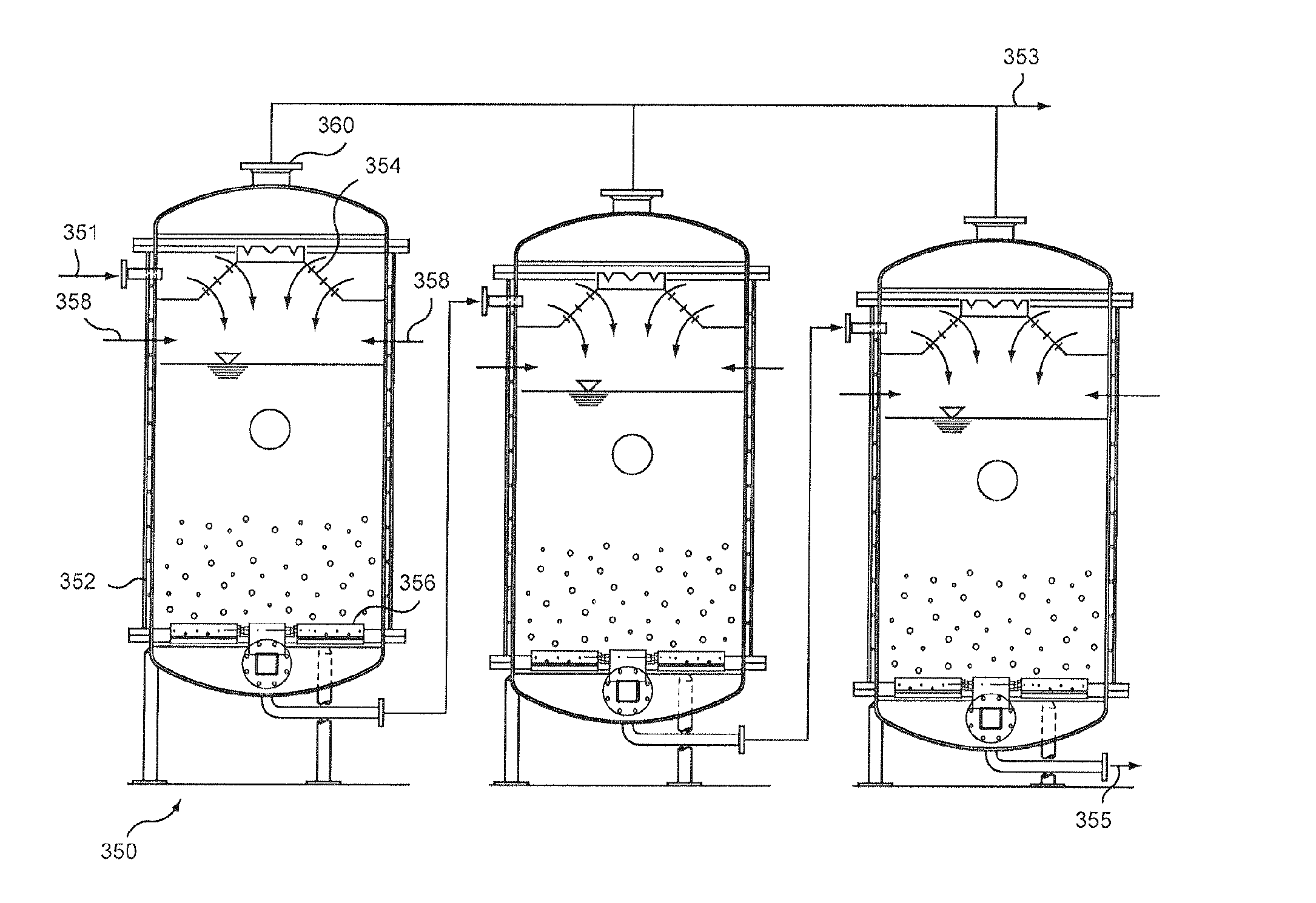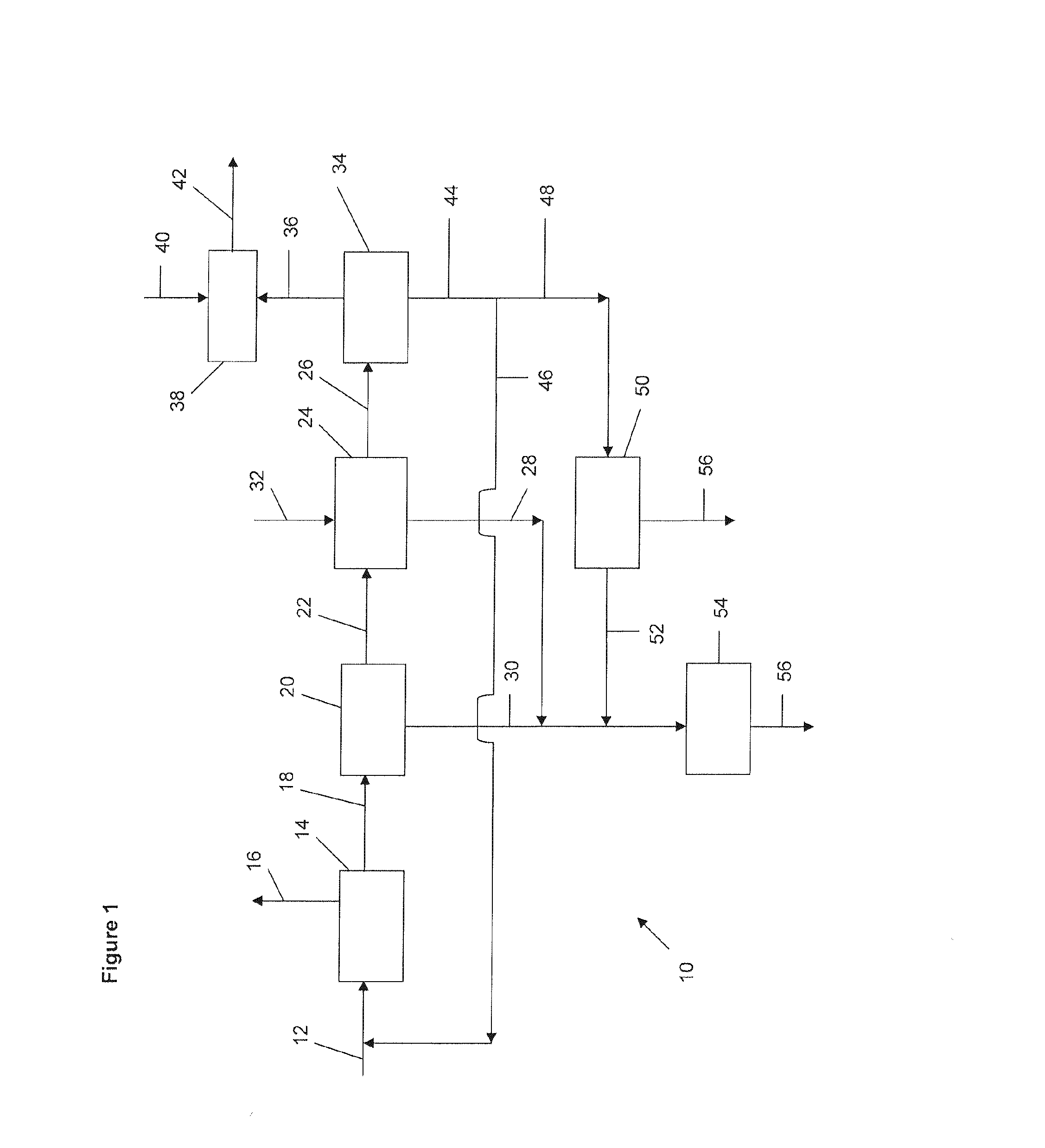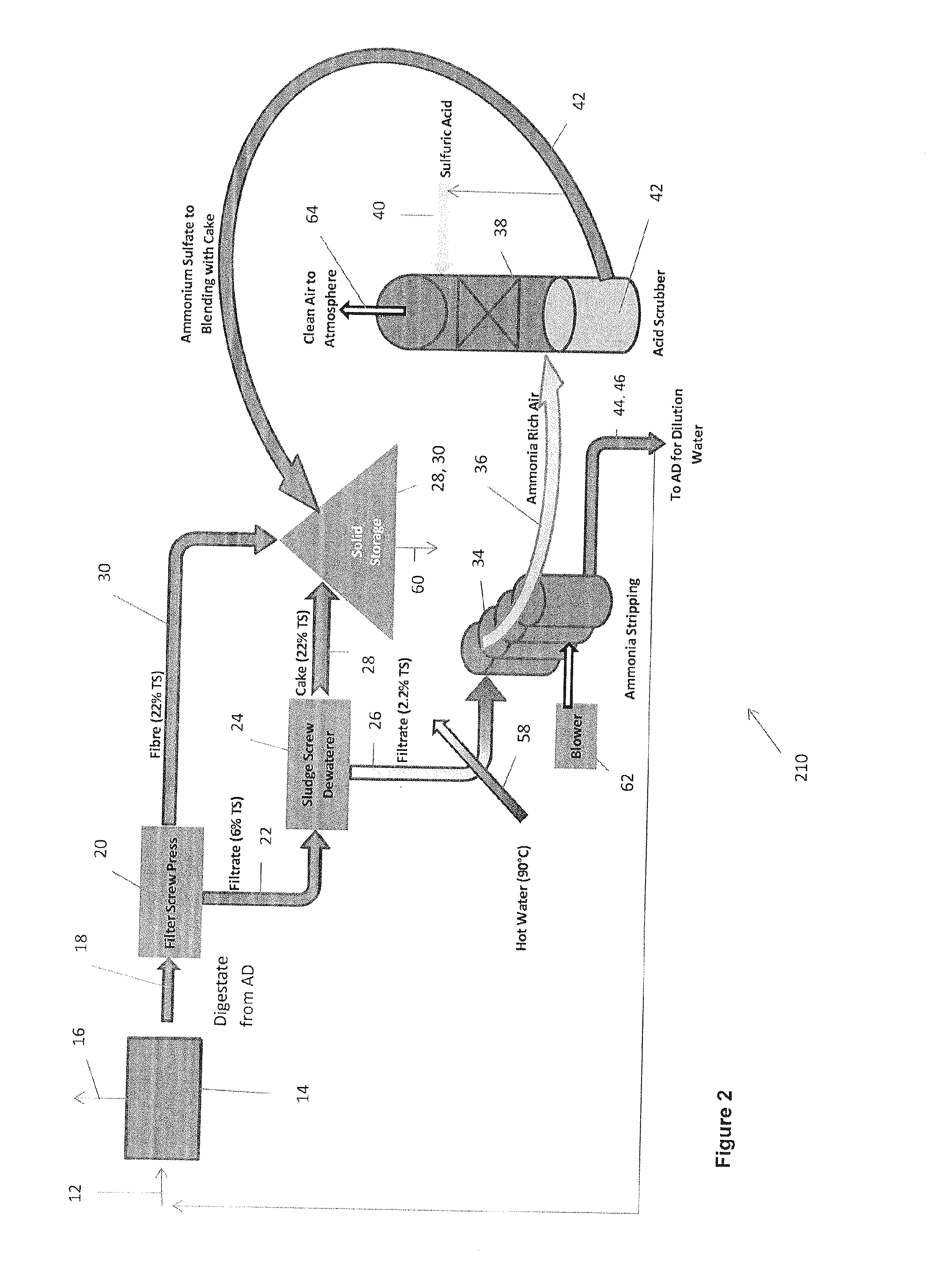Nutrient recovery process
a technology of nutrient recovery and recovery process, applied in the field of anaerobic digestion, can solve the problems of increasing the loss of ammonia along with the evaporated water, and the sludge dewatering process would lose a lot of ammonia with the removed water, so as to reduce the water feed and waste flow rate of the digester
- Summary
- Abstract
- Description
- Claims
- Application Information
AI Technical Summary
Benefits of technology
Problems solved by technology
Method used
Image
Examples
Embodiment Construction
[0021]FIG. 1 shows a system 10 for treating a feedstock 12. The feedstock 12 is typically a waste biomass. The feedstock 12 is treated first in an anaerobic digester 14. The digester 14 converts the feedstock 12 into biogas 16 and digestate 18. Biogas 16 may be used, typically after upgrading, in the system 10 or after being transferred out of the system 10. Examples of suitable feedstock 12 that result in high nutrient content digestate 18 include animal manure, post-consumer food waste, pre consumer food processing waste, biofuels processing by products, agricultural waste, and municipal wastewater sludge, among others. International Publication WO 2012 / 109737 is incorporated by reference.
[0022]The biogas 16 may be flared but it is preferably sent to a biogas processing unit to produce one or more of gas products, heat or power. The biogas processing unit may include one or more treatment units to upgrade the biogas. For example, the biogas may be treated to remove water vapour, p...
PUM
| Property | Measurement | Unit |
|---|---|---|
| concentrations | aaaaa | aaaaa |
| concentrations | aaaaa | aaaaa |
| concentration | aaaaa | aaaaa |
Abstract
Description
Claims
Application Information
 Login to View More
Login to View More - R&D
- Intellectual Property
- Life Sciences
- Materials
- Tech Scout
- Unparalleled Data Quality
- Higher Quality Content
- 60% Fewer Hallucinations
Browse by: Latest US Patents, China's latest patents, Technical Efficacy Thesaurus, Application Domain, Technology Topic, Popular Technical Reports.
© 2025 PatSnap. All rights reserved.Legal|Privacy policy|Modern Slavery Act Transparency Statement|Sitemap|About US| Contact US: help@patsnap.com



